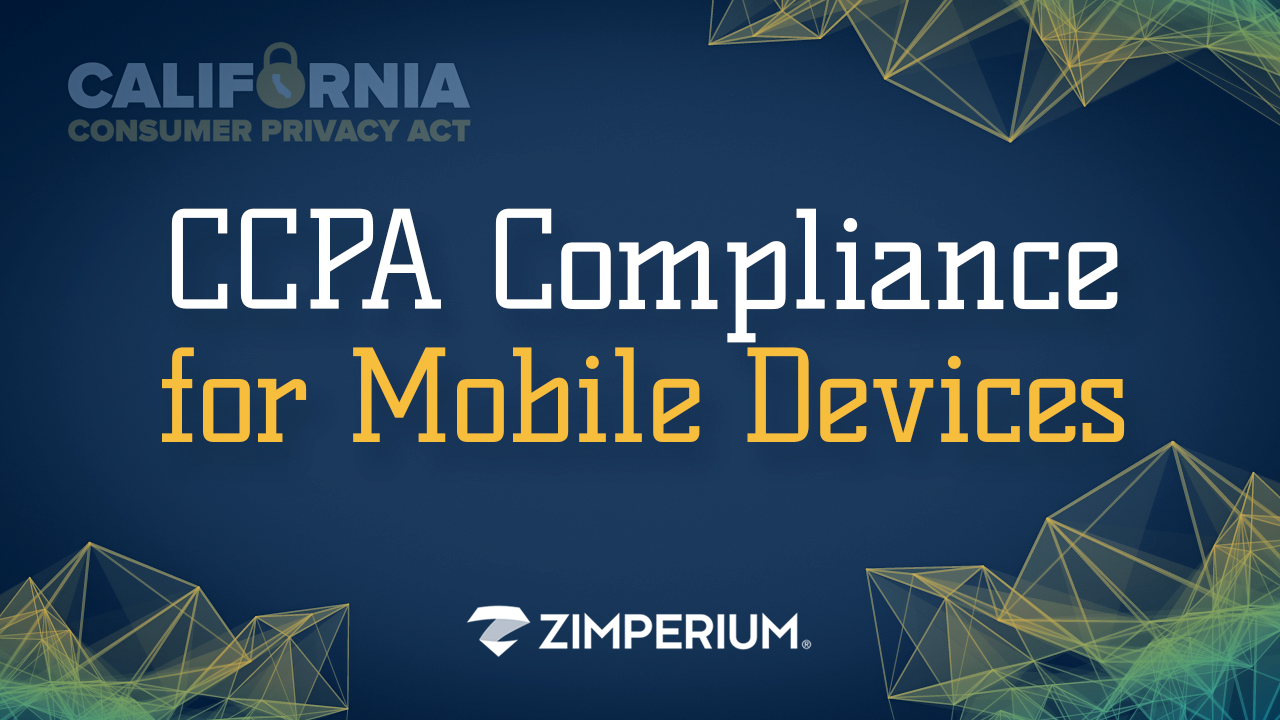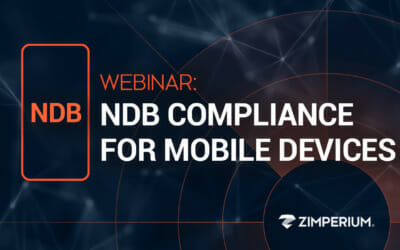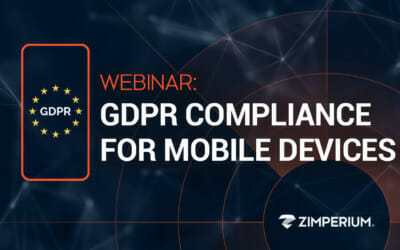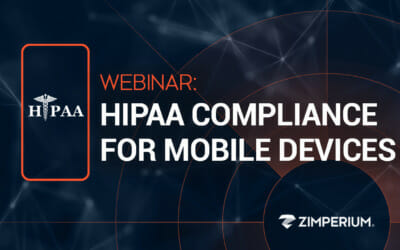The California Consumer Privacy Act (CCPA) has been characterized as “the beginning of America’s General Data Protection Regulation (GDPR),” and its aim is to enhance privacy rights and consumer protection for residents of California.
Businesses subject to CCPA must meet strict requirements relating to their use of personally identifiable consumer data. Mobile devices and applications (including apps provided to consumers) that contain or process personally identifiable information (PII) have become pervasive. It is imperative your organization’s mobile apps and devices are CCPA compliant – just as your personal computers and servers are.
Zimperium, a global leader in enterprise mobile threat defense (MTD) and a leading provider of real-time, on-device protection against known and unknown mobile threats, hosted a free webinar on June 12, 2019. The webinar provided actionable insights into CCPA mobile compliance requirements. Watch the on-demand webinar recording.
For companies in highly-regulated industries, protecting mobile devices isn’t only a good business practice, it’s legally required. That said, checking the compliance box isn’t enough.
Attacks are evolving so fast that compliance laws can’t keep up. Organizations need mobile security that can protect non-public information today and in the future.
All About CCPA Compliance for Mobile Devices
JT Keating, Vice President of Product Strategy, led the webinar titled “CCPA Compliance for Mobile Devices — The 60% of Endpoints Often Unprotected” and answered questions. In addition, Keating provided information on how and why:
- Mobile devices are endpoints under CCPA;
- You must protect the 60 percent of your organization’s endpoints (mobile devices) as well as you already protect the 40 percent (personal computers and servers);
- You need on-device, rather than cloud-based, protection to protect mobile devices;
- Only machine learning-based technology can keep up with evolving threats; and
- You must protect mobile devices against Device, Network, Application and Phishing attacks.



